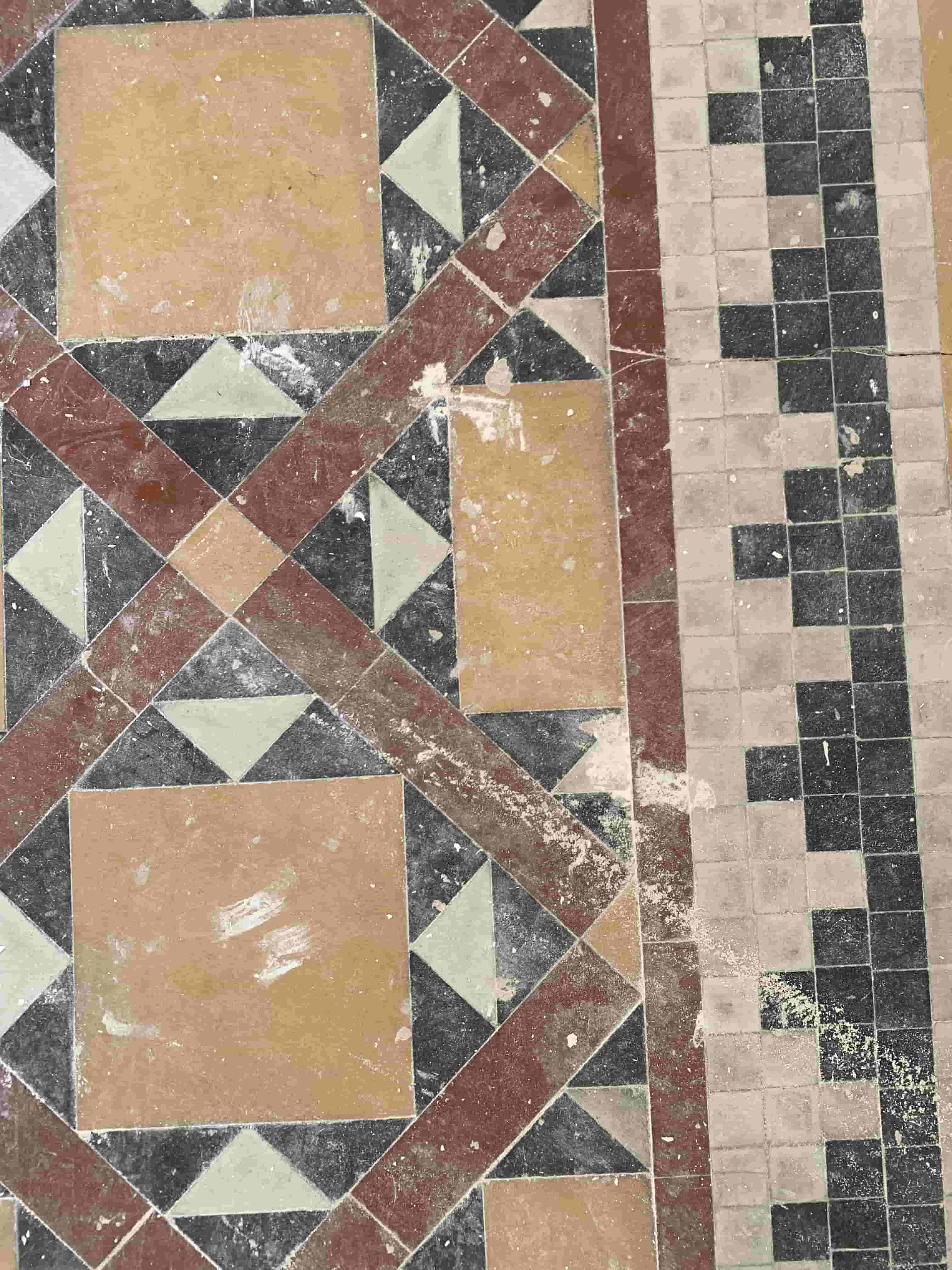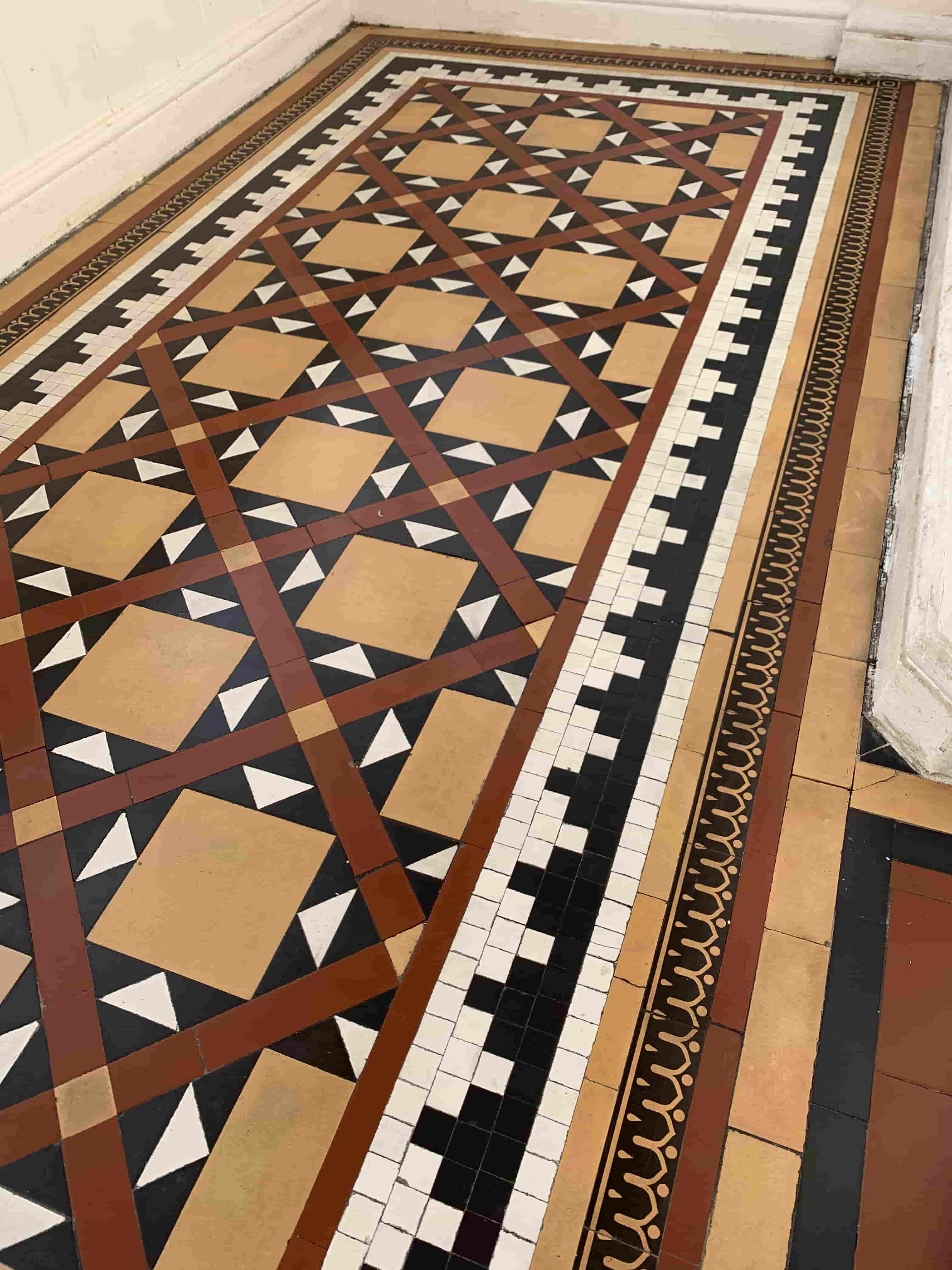I was asked to provide a quotation for renovating a Victorian Tiled Floor at a flat in the town of Cranbrook. It was a large building that been subject to fire damage and the property developers needed help with one of the flats which had an enclosed balcony with a Victorian floor.

They contacted Tile Doctor and I went along to perform a survey. I could see the floor was in a poor condition from years of neglect. There were broken tiles, heavily ingrained dirt and paint splashes from the decorating.
 |
 |
I provided a detailed quote following the assessment and was awarded the job.
Cleaning and Repairing a Victorian Tiled Vestibule Floor
The first job was to replace the damaged tiles which involved breaking the out from the centre and carefully removing the debris. Once done they were replaced with matching replacements that had been sourced earlier. This work took most of the day although I did manage to complete this before the daylight went (there wasn’t a light available on the balcony!).
The next day with the tile adhesive set I was able to move onto the first step of the cleaning process using a strong dilution of Tile Doctor Remove and Go that would remove the dirt and soften up the paint spots. I followed the usual process of allowing it to soak in for ten minutes before scrubbing it in with a black scrubbing pad fitted to a rotary machine. After extracting the soiling with a wet vacuum I could see I had managed to tackle the paint but more work would be needed to remove the ingrained dirt.
To further clean the tiles, I repeated the process using a strong dilution of Tile Doctor Pro-Clean which was perfect for this job. It’s a powerful alkaline cleaner that’s designed to remove dirt from tile and grout. This time however I worked the solution in with a 200-grit burnishing pad. These pads are encrusted with industrial diamonds and usually used for polishing stone floors however they also work well on Victorian tiles.
The resultant slurry was extracted with the wet vacuum and I moved onto the last step in the cleaning process which was to treat the tiles to an acid wash using Tile Doctor Grout Clean-up. This last process further cleans up the tiles by removing old grout smears and other mineral contaminates, it also neutralises the pH level of the floor following the application of alkaline cleaners used earlier.
My job was done for that day so I left, leaving the floor to dry overnight in readiness for sealing.
Sealing a Victorian Tiled Vestibule Floor
The next morning, I arrived and tested the tiles for water content using a moisture meter. We don’t advise applying a sealer to damp tiles as it can affect the way it cures and affect the overall finish.
Happy that they were dry, I started applying a base coat of Tile Doctor Colour Grow sealer, this is an impregnator that works by occupying the pores so dirt can reside there. This sealer leaves a matt finish but it also contains a colour intensifier that enhances the natural colours in the Victorian tiles.
 |
 |
I left that to dry for an hour and then followed up with three coats of Tile Doctor Seal and Go Extra. This is a compatible acrylic sealer that leaves the floor with a low sheen finish that looks good on Victorian tiles.
I was pleased with the finished result and confident that the new occupants would be too.
Source: Victorian Floor Restoration and Property Development Service in Cranbrook Kent